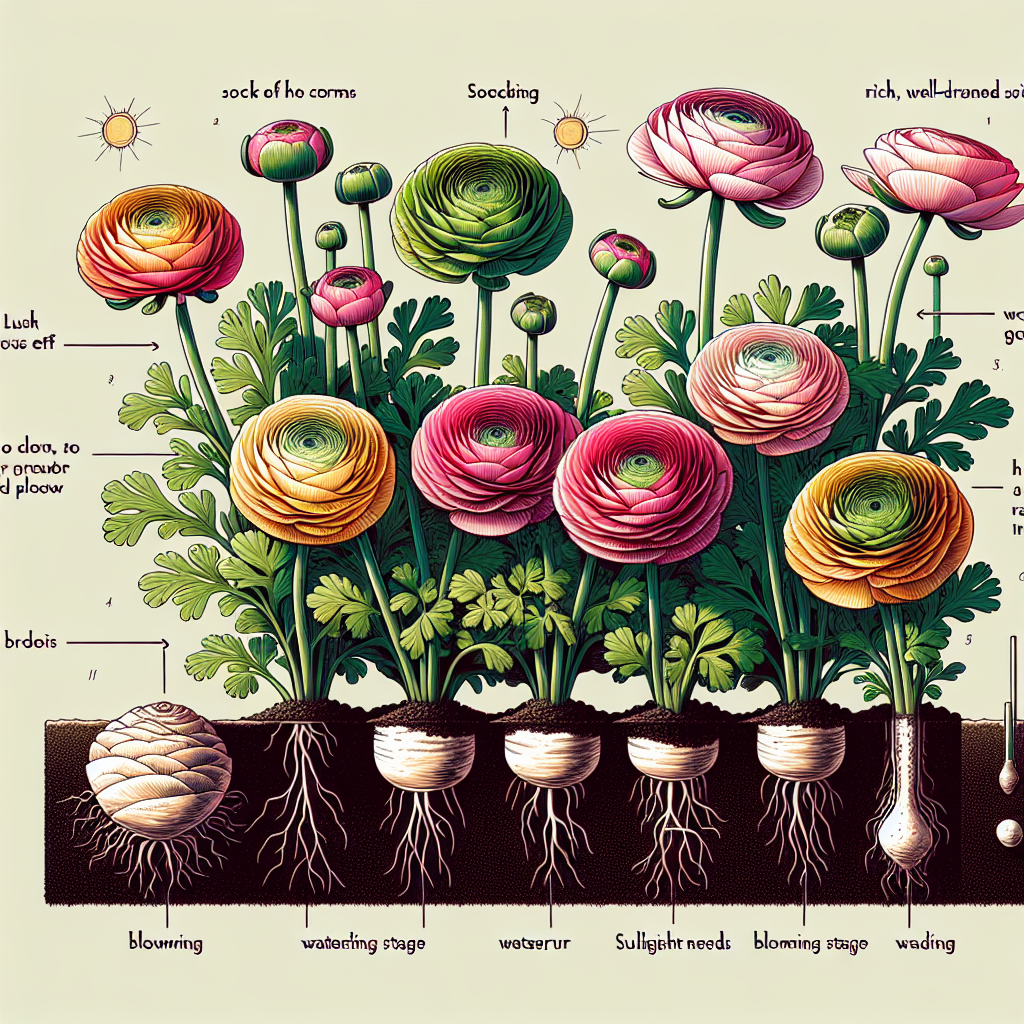
Ranunculus how to grow
Growing Ranunculus: A Complete Guide
Ranunculus, commonly known for their stunning, layered blooms, are a gardener's delight. With a wide array of colors, these flowers provide a vibrant touch to gardens and floral arrangements alike. However, to achieve that breathtaking display, it's essential to know the best practices for growing ranunculus. In this comprehensive guide, we will explore everything you need to know, from choosing the right variety to ensuring optimal growing conditions.
What is Ranunculus?
Belonging to the buttercup family, Ranunculus is characterized by its bright, rose-like flowers that bloom from late spring to early summer. These flowers are hardy and can grow in various climates; however, understanding their specific needs is crucial to successfully cultivating them.
Choosing the Right Variety
Before diving into the how to grow ranunculus, it's important to choose the right variety for your garden. Here are some popular types:
- Ranunculus asiaticus: Known for its vibrant colors and lush flowers, it’s the most commonly cultivated type.
- Ranunculus acris: Found in wildflower meadows, this variety has simple yellow flowers.
- Ranunculus bulbosus: This type has a more delicate appearance with a cup-shaped flower.
When selecting your ranunculus, consider climate, blooming period, and color preferences.
Preparation: Soil and Location
Ideal Soil Conditions
Ranunculus thrives in well-draining soil that is rich in organic matter. Here are some soil characteristics to consider:
- pH Level: Aim for a pH level between 6.0 - 7.0.
- Drainage: Ensure that water drains easily; soggy soil can lead to bulb rot.
- Organic Matter: Incorporate compost or well-rotted manure to enhance soil fertility.
Choosing the Right Location
Ranunculus prefers full sun to partial shade. Here’s how to determine the best spot:
- Watch the sunlight for a full day. Aim for at least 6 hours of direct sunlight.
- Avoid areas where water tends to pool after rain.
- Consider proximity to other plants: ensure they won't compete too heavily with larger plants.
Planting Ranunculus
When to Plant
The timing of planting ranunculus is key to their success. In most regions, the ideal time for planting is in the fall or early spring. If you live in a warmer climate, fall planting may yield better results.
How to Plant Ranunculus
Planting ranunculus isn’t complex, but attention to detail will help ensure healthy growth. Here’s a step-by-step guide:
- Prepare the Bulbs: Soak the bulbs in water for about 3-4 hours before planting. This will encourage sprouting.
- Planting Depth: Dig holes about 1-2 inches deep; the pointed end of the bulb should face upwards.
- Spacing: Space bulbs approximately 6-12 inches apart to allow room for growth.
- Watering: Water lightly after planting to settle the soil, but avoid overwatering.
Caring for Ranunculus
Watering Requirements
Initially, water your ranunculus regularly, ensuring the soil is moist but not saturated. After the initial growth period, you can reduce the frequency of watering:
- During flowering, aim for deep watering every week.
- Avoid watering the foliage to prevent mildew and mold.
Fertilizing for Healthy Growth
Fertilization is crucial for vibrant blooms. Here’s how to fertilize ranunculus:
- Type of Fertilizer: Use a balanced, slow-release fertilizer once during spring.
- Application: Sprinkle fertilizer around the base of the plants, then water thoroughly.
Pest and Disease Control
Like many flowers, ranunculus can be susceptible to pests and diseases. Here are some common issues:
- Spider Mites: These tiny pests can be controlled with insecticidal soap.
- Botrytis Blight: This fungal disease thrives in damp conditions. Trim back affected areas and improve air circulation.
Harvesting Ranunculus
When to Harvest
The right time to cut ranunculus for bouquets is when the blooms are fully open but not yet starting to decline. This maximizes their vase life. Look for brightly colored petals and a sturdy stem before harvesting.
How to Cut Ranunculus
Follow these steps for proper cutting:
- Use sharp, clean clippers to avoid damaging the stems.
- Cut the stem at an angle about 1-2 inches from the base.
- Place the flowers immediately in water to maintain freshness.
Extending Bloom Life
Once you've harvested your ranunculus, you'll want to extend the life of the blooms as long as possible. Here are helpful tips:
- Keep flowers in cool conditions, away from direct sunlight.
- Change the water every couple of days to keep it fresh.
- Add flower food to the water to provide nutrients.
Winter Care for Ranunculus
Storing Bulbs
If you live in a region with cold winters, you may need to store your ranunculus bulbs after the growing season ends:
- Allow foliage to die back naturally before removing bulbs.
- Carefully dig up bulbs and clean off excess soil.
- Store in a cool, dry place in breathable containers, like mesh bags.
Replanting in Spring
When spring arrives, simply replant your stored bulbs following the initial planting steps mentioned above. This will give you another round of beautiful blooms.
Conclusion
With the right knowledge and care, growing ranunculus can be a rewarding endeavor. From select varieties to optimal planting techniques, this guide encompasses all you need for a flourishing ranunculus garden. Follow these steps, and in no time, you’ll be rewarded with a vibrant display of flowers that can bring joy to your home or garden space. Remember, every garden is unique, so be attentive to your plants’ needs and adjust your care accordingly. Happy gardening!
By Guest, Published on September 30th, 2024